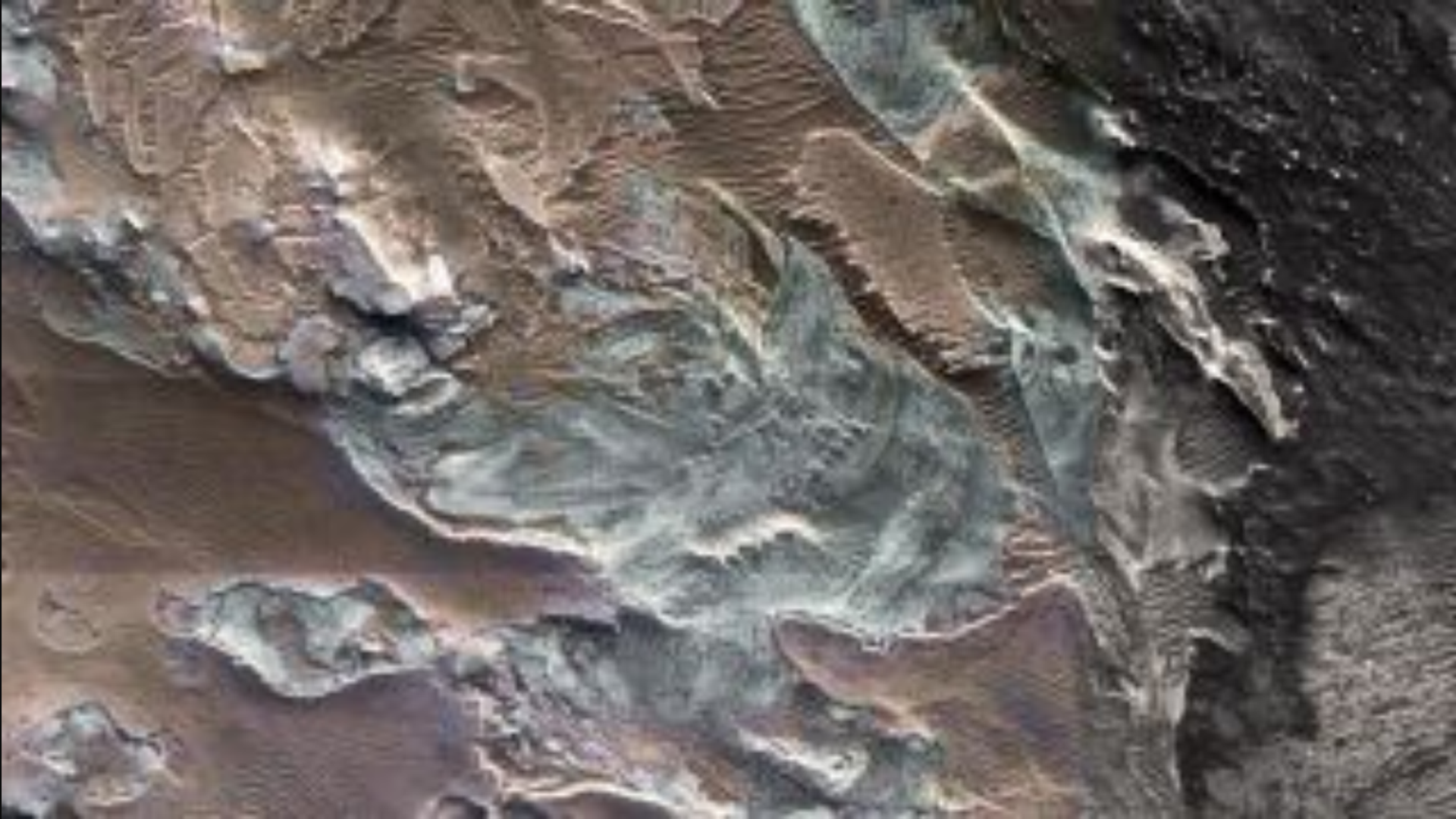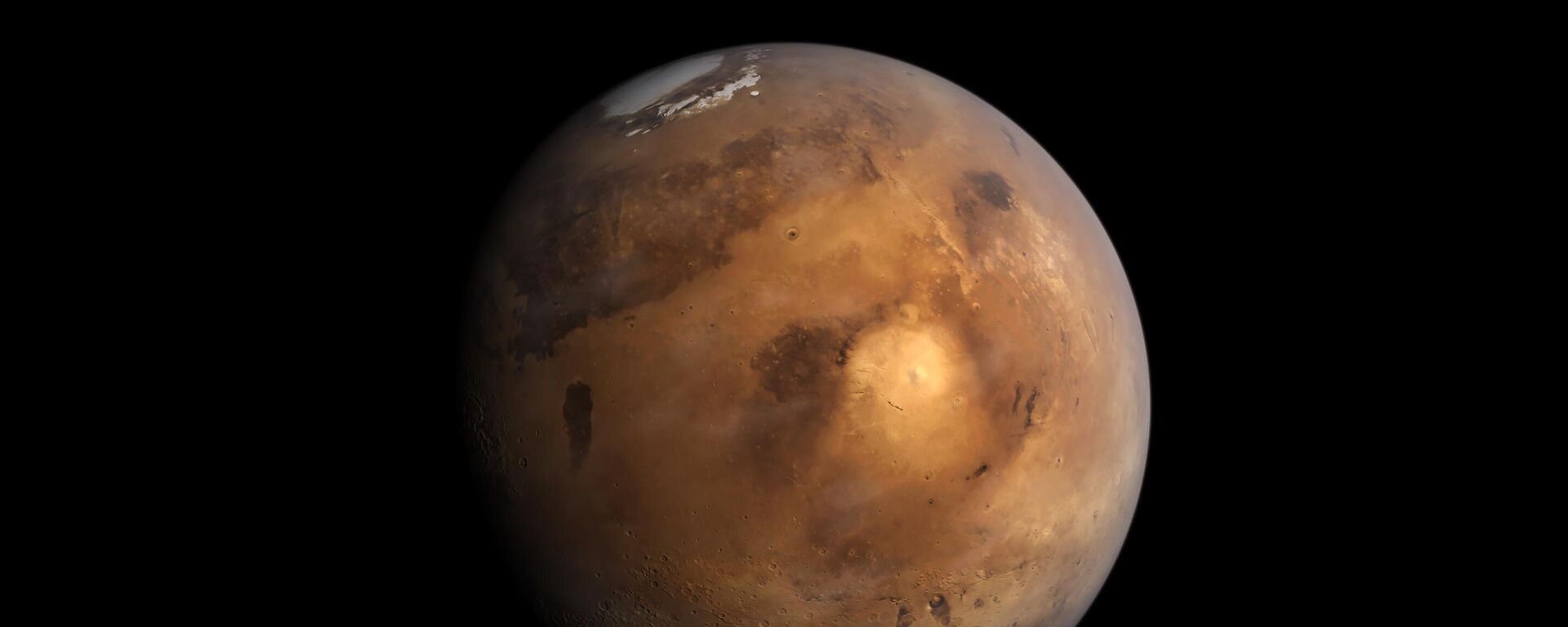MRO Probe Discovers Relict Salt Glacier Near Mars Equator, Study Reveals
03:49 GMT 18.03.2023 (Updated: 04:01 GMT 18.03.2023)

"Relict Glacier" in Eastern Noctis Labyrinthus
© Photo : NASA MRO HiRISE and CRISM false color composite. Lee et al. 2023 / "Relict Glacier" in Eastern Noctis Labyrinthus
Subscribe
Planetary scientists have found the remains of an ancient glacier near the equator of Mars, which consists mainly of deposits of salts. However, it may still contain water ice, isolated from the external environment.
It is now known that there are deposits of water ice in the polar regions of Mars. However, the question of whether there are ice deposits in the middle and equatorial latitudes of the planet remains a matter of debate.
A team of planetary scientists led by Pascal Lee of the SETI Institute has reported finding evidence of a relic glacier in the eastern part of the Noctis Labyrinthus. The discovery was made while analyzing data from several instruments of the Mars Reconnaissance Orbiter.
No water ice was found in the sediments, but hydrated and hydroxylated sulfates were found. These salts were probably formed as a result of the interaction of volcanic ash or pyroclastic sediments with glacial ice in the past.
"What we've found is not ice, but a salt deposit with the detailed morphologic features of a glacier," says Pascal Lee. "What we think happened here is that salt formed on top of a glacier while preserving the shape of the ice below, down to details like crevasse fields and moraine bands."
The glacier is 160 kilometers northwest of the Oudemans Crater, about 2-4 kilometers wide and at least 6 kilometers long. It consists of light sediments showing a linear and arc-shaped structure. There are also concentric and wedge-shaped fracture patterns and folds.
"We've known about glacial activity on Mars at many locations, including near the equator in the more distant past. And we've known about recent glacial activity on Mars, but so far, only at higher latitudes. A relatively young relict glacier in this location tells us that Mars experienced surface ice in recent times, even near the equator, which is new," adds Lee.
Over time, the glacier lost all or most of its ice reserves, but salt deposits remained, preserving the primary morphology of the glacier. Perhaps some amount of ice still exists inside the glacier, isolated from the outside environment by sediments.
"This region of Mars has a history of volcanic activity. And where some of the volcanic materials came in contact with glacier ice, chemical reactions would have taken place at the boundary between the two to form a hardened layer of sulfate salts," says Sourabh Shubham, co-author of the study. "This is the most likely explanation for the hydrated and hydroxylated sulfates we observe in this light-toned deposit."
A report on the results of the work was presented at the 54th Lunar and Planetary Science Conference (LPSC).

